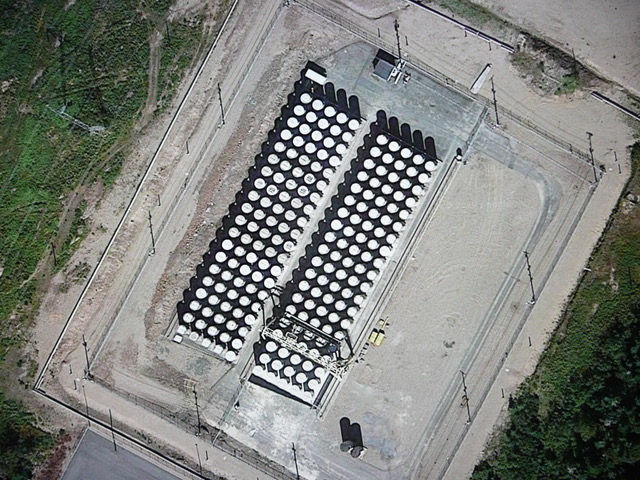The new nuclear boondoggle in New Brunswick
The questionable enthusiasm being shown by proponents to spend millions of taxpayer dollars on building not one, but two, small modular nuclear reactors (SMNRs) in New Brunswick could well be a boondoggle in the making.
The “investment” of $5 million each to ARC Nuclear (an American company) and Moltex Energy (a UK company) by NB Power and the provincial government to develop two SMNR prototypes is a sign that our province has yet to learn the lesson that large investments in nuclear will result in needlessly growing the debt.
There are numerous logical reasons for New Brunswickers to be concerned.
 First, the stored spent fuel from the CANDU 6 reactor at Point Lepreau is expected to supply only about 20 years of reprocessed fuel for the proposed Moltex 300 MW unit. This supposes that additional spent fuel rods from other reactors in Ontario and Quebec may need to be shipped to Point Lepreau, posing new challenges, including transportation safety concerns.
First, the stored spent fuel from the CANDU 6 reactor at Point Lepreau is expected to supply only about 20 years of reprocessed fuel for the proposed Moltex 300 MW unit. This supposes that additional spent fuel rods from other reactors in Ontario and Quebec may need to be shipped to Point Lepreau, posing new challenges, including transportation safety concerns.
Second, SMNR Wasteburners create their own highly concentrated reprocessed waste that could be 100 times more toxic than the original waste material presently entombed onsite in 200 concrete silos. SMNR high and medium-level waste will need to be stored safely at Point Lepreau for eons to come, posing safety, health and ethical issues that must be addressed now.
Third, the economics of SMNRs is a billion-dollar question as neither the likelihood of success, or the timeframe required to build one, is known. Therefore, the total funding required is unknown as well, but based on past experience is likely to cost far more than what the proponents have been suggesting publicly. It is puzzling why a premier who is concerned about the provincial debt and in making poor financial investments fails to see the problem.
Fourth, New Brunswick once again is a guinea pig being taken advantage of for an unproven, very risky and expensive technology by the UK and US companies. These two foreign companies will be the benefactors at our small province’s risk and expense. This is colonialism once again.
Fifth, with 10 to 20 years being the realistic timeframe for an SMNR to possibly be ready to produce power at Point Lepreau, such power will most likely be superfluous for New Brunswick’s needs.
Sixth, NB Power’s base power for the indefinite future is renewable hydro power from Quebec and Newfoundland. As well, existing local renewable energy is likely to grow, while power consumption may be reduced due to efficiencies made to the power grid along with retrofits to many homes and buildings.
Seventh, NB Power’s wisest and safest interest is to reduce its power generation requirements through energy efficiency, and by ramping up to 100% renewable energy by 2040. This is a realistic goal that will help address both the climate emergency starting now, while also saving millions of taxpayer dollars on SMNRs.
Producing sufficient power to meet the needs of the province is a requirement, but producing additional power specifically for export is an unwise objective. Buying and selling power between utilities is normal operating procedure. But NB Power should not plan on selling power to other utilities because conditions can change quickly, leaving the utility with power that it can’t sell or only sell at a loss. Nuclear will be the most expensive power to produce.
The federal Liberal government is likely to provide the requested $30 million from the Strategic Innovation Fund requested by the proposed projects, but that will be far from what will be required. The estimated cost per SMNR prototype being designed is well over $100 million each. Where will the rest of the money come from, New Brunswick taxpayers?
A 2019 study found that “Nuclear energy is never profitable”; the new study slams the nuclear power business case. This study by DIW Berlin, a leading German economic think-tank finds that every 1,000 MW of nuclear power plant built since 1951 resulted in an average economic loss of 4.8 billion euro, or $7.3 billion CAD.
And yet Canadian politicians can’t wait to throw public money in the far-fetched hope that this time may be different. NB Power has never revealed to its customers the business case for the Point Lepreau CANDU 6 reactor since it was constructed and refurbished, including day-to-day operations and maintenance shutdowns. But we do know that the nuclear reactor is responsible for the lion’s share of the $5 billion debt that the utility presently owes.
Considering the poor track record of nuclear power and the low probability of technological success, it is beyond comprehension why NB Power and the Higgs government are so keen to move ahead with the two competing SMNR projects that could both fail. It appears they are still so taken by the nuclear power conglomerate that they refuse to see the risk of another boondoggle.
The obvious question is this: Why are they willing to continue investing public money in a technology that has never been successful economically or environmentally over supporting well-proven responsible renewable energy development that is succeeding at both?
Sam Arnold is with the Sustainable Energy Group – Carleton and a member of the Coalition for Responsible Energy Development in New Brunswick. This commentary originally appeared in NB Media Coop June 2, 2020.
